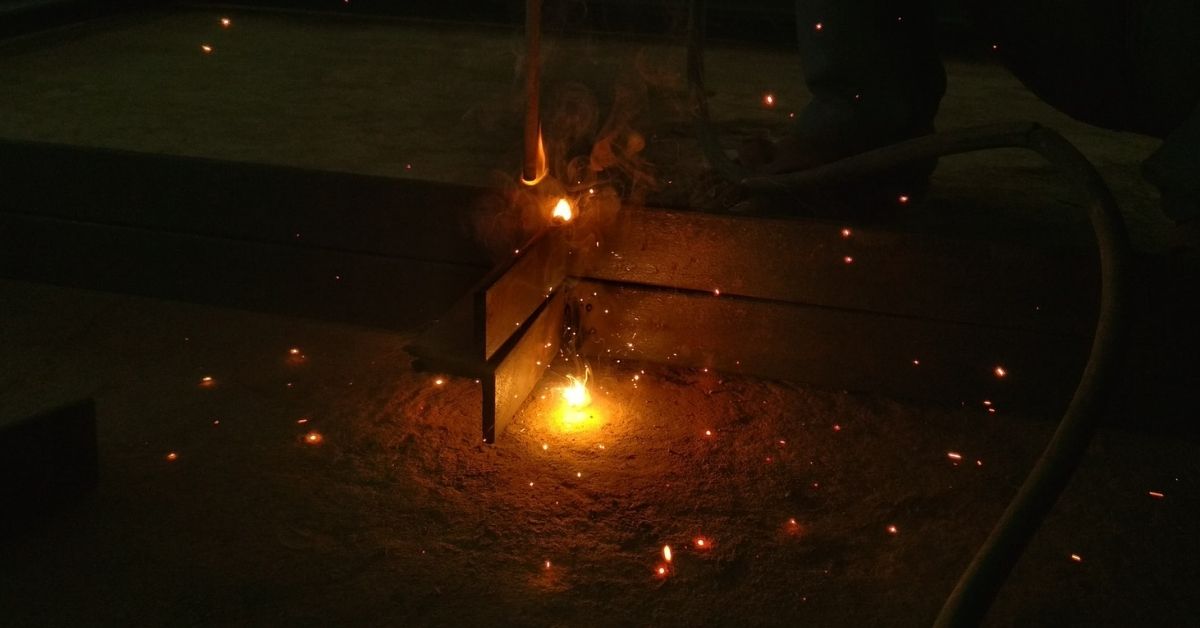Share

Welding is an art. The person holding the welding torch has to have the skill, patience, and a steady hand. Without these three traits, welds are prone to failure, which can result in expensive repair bills or worse yet injury.
Using the wrong technique could also lead to property damage that will cause you even more headaches down the road. If you want to know how to weld like a pro, then you need the right welding techniques. In this blog post, we will discuss 7 of the best welding tips that professional welders use when they are in their workshop or on a job site.
How to Weld Like a Pro In 7 Expert Tips
1. Choose the right welder
Before you can weld like a pro, you need to have the right tools for the job. Make sure to choose a welder that is suited for your project and level of experience. There are many different types of welders on the market, so do your research and find one that is right for you.
2. Inspect your materials
Before welding, it is important to inspect your materials for any defects. Make sure there are no cracks or holes in the metal and remove all paint or rust from the surface. This will help ensure that your weld is successful.
3. Keep clean cuts
When cutting the metal, make sure to use a very sharp blade to avoid rough edges that can be hard to work with later on. Make smooth and even cuts for cleaner, more professional-looking results. Also, remember not to cut through bolts or screws since this could cause dangerous shrapnel when you are finished welding.
4. Use flux core wire (for beginners)
This tip is especially helpful if you are new to welding because it helps prevent blowback which happens when molten material comes back at you during the process of welding. Using flux core wire makes it easier by covering up any impurities in the metal so they do not come flying as sparks towards your face while welding.
5. Keep the welder in good condition
Just like any other tool, your welder needs to be kept in good condition if you want it to perform well. Make sure to clean and oil all moving parts regularly, and replace any worn out or broken parts as soon as possible. This will ensure that your welding experience is smooth.
6. Use the right technique
Welding is not a difficult process, but there are some techniques that are better than others depending on what you are trying to achieve. Make sure to read up on the different techniques before starting your project, and practice them often so you can get comfortable with them.
7. Wear the right gear
Welding can be a dangerous activity, so it is important to wear the right gear to protect yourself from injury. Make sure to wear long pants and sleeves, a welding helmet, gloves, and safety shoes. And don’t forget to drink plenty of water while you are welding to stay hydrated!
What To Avoid When Welding
1. Welding in a hurry.
Welders should never try to weld too quickly because it can lead to mistakes and poor welds. In order to produce quality welds, take your time and be precise.
2. Welding in the dark.
Welding in low-light conditions can be dangerous because you can’t see what you’re welding properly. Make sure there is adequate lighting so you can see your work clearly.
3. Welding with wet hands.
If your hands are wet, the moisture will cause the electrode to stick to your hand instead of the metal being welded. This could potentially cause an electric shock. Be sure to dry your hands before beginning any welding project.
4. Welding in a windy environment.
Welding in high winds can be dangerous because it may cause the metal being welded to blow around and have shifting positions that cannot be corrected. In addition, welding particles from metals such as aluminum or magnesium could possibly combust if they come into contact with your hot electrode, this poses serious health risks when you breathe them in so avoid welding where there is too much wind.
What is The Easiest Weld To Learn?
There are different types of welds that can be learned when it comes to welding. The three most common welds are the T-joint, lap joint, and butt joint. Out of these joints, the T-joint is the easiest weld to learn.
This type of weld is used when two pieces of metal are joined together at a right angle. Next is the lap joint, which is used when two pieces of metal are joined together at a parallel angle. The butt joint is the most difficult weld to learn and is used when two pieces of metal are joined together in a straight line.
Can Welding Be Self Taught?
Welding can be self taught, but it is recommended that a person takes a welding class to learn the proper techniques. There are many online resources and videos that can help you learn how to weld, but nothing compares to having a certified welder teach you in person.
How Long Does It Take To Get Good at Welding?
It takes years of practice and a lot of patience to become good at welding. Welding is not easy, but the results are very rewarding. Just keep practicing and you will eventually become a pro!
Welding can seem intimidating at first, but with these tips in mind, you will be able to weld like a pro in no time! Follow these guidelines and practice often, and soon you will be able to tackle any welding project with ease. Happy welding!
Suggested Post
- How to Weld Horizontal Position (With 6 FAQ’s About Welding)
- How to Weld Using a Car Battery: 7 Steps For Best Results



0 Comments